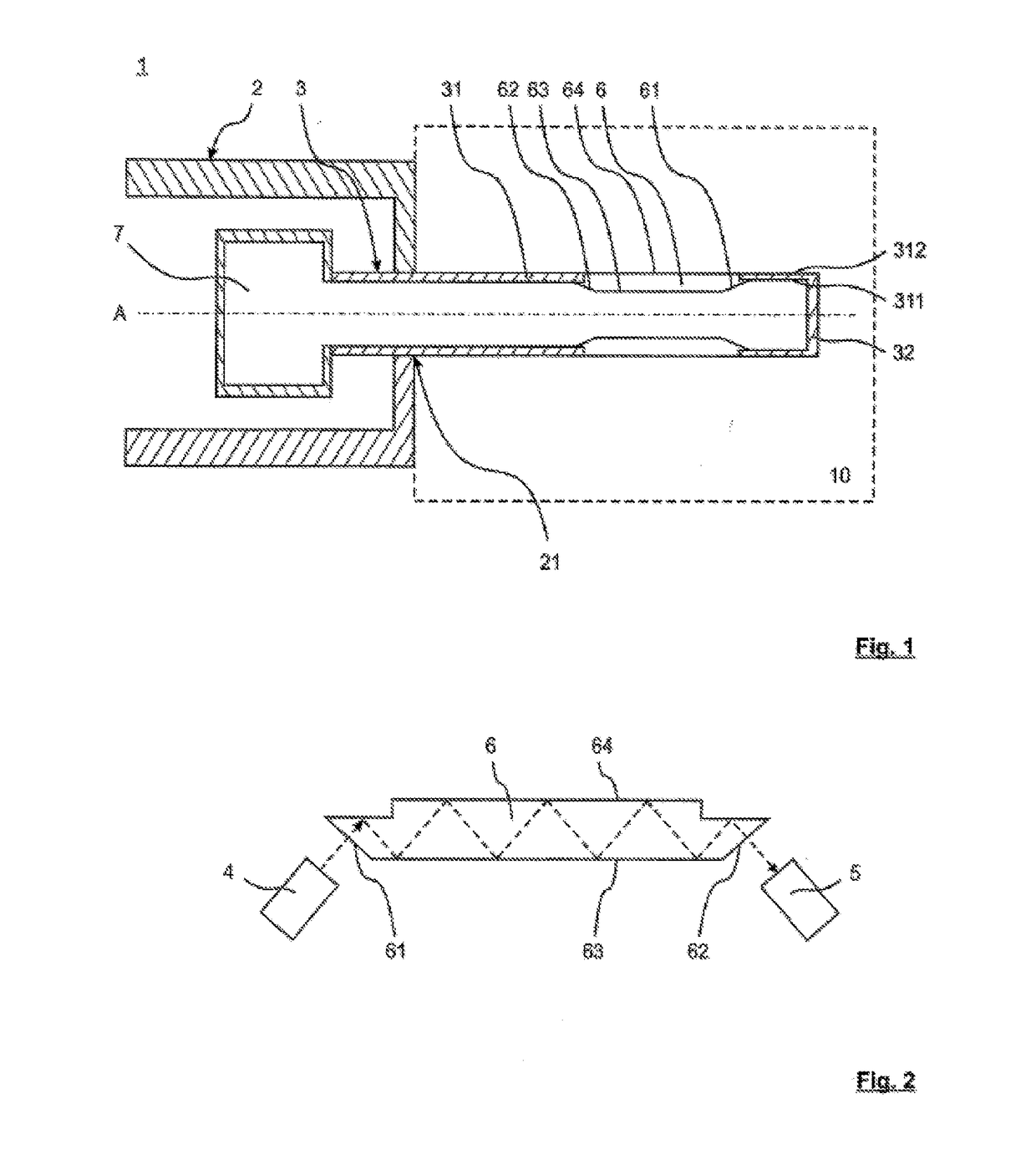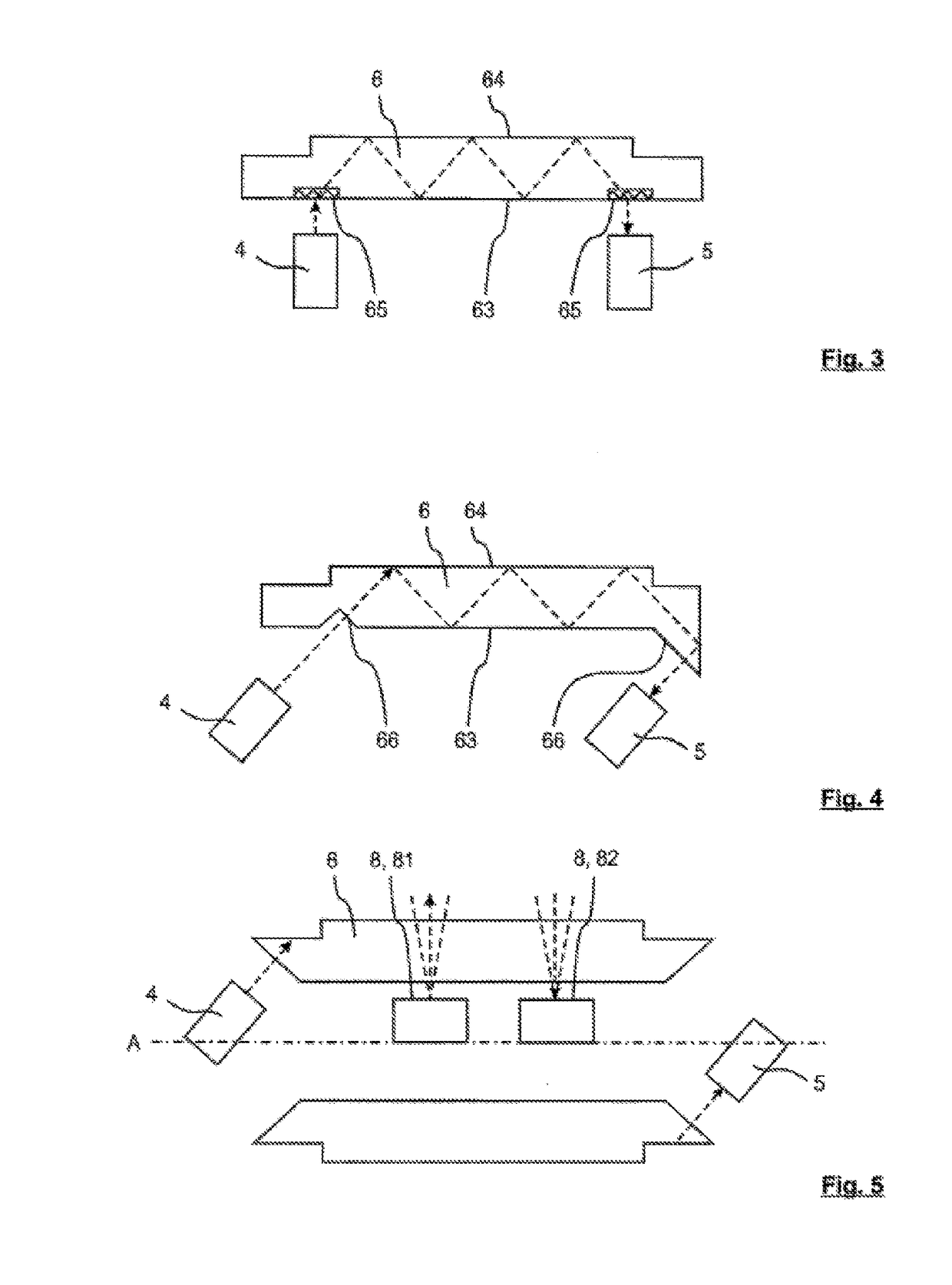Device for analyzing a product to be analyzed located in a product space
a technology for analyzing devices and products, applied in the direction of material analysis, material analysis, instruments, etc., can solve the problems of sensor “blindness”, sensor integration of prisms or even plates in process probes, and contamination on the surface is a certain problem, so as to ensure rapid material exchange on the surface, facilitate cleaning, and ensure good flow
- Summary
- Abstract
- Description
- Claims
- Application Information
AI Technical Summary
Benefits of technology
Problems solved by technology
Method used
Image
Examples
Embodiment Construction
[0053]FIG. 1 shows schematically a longitudinal section of an analysis device 1 according to an exemplary embodiment of the invention as process probe with cylindrical ATR element 6. The analysis device 1 has a probe housing 2 having an opening 21 in which a probe body 3 is positioned. Fitted in the circumferential wall of the probe body 31 is an ATR element 6 as measurement window. In this embodiment, the ATR element 6 is a hollow cylinder having an entrance region 61 and an exit region 62 for the measurement radiation. The inner side 63 and the outer side 64 of the ATR element 6 guide the measurement radiation by total reflection from the entrance region 61 to the exit region 62. The outer side 64 of the ATR element 6 aligns with the outer side of the circumferential wall 312 of the probe body 3. Owing to a tapered realization of the entrance region 61 and of an exit region 62 of the ATR element 6, the inner side 63 is somewhat elevated with respect to the inner side of the circum...
PUM
| Property | Measurement | Unit |
|---|---|---|
| wavelengths | aaaaa | aaaaa |
| thicknesses | aaaaa | aaaaa |
| thickness | aaaaa | aaaaa |
Abstract
Description
Claims
Application Information
 Login to View More
Login to View More - R&D
- Intellectual Property
- Life Sciences
- Materials
- Tech Scout
- Unparalleled Data Quality
- Higher Quality Content
- 60% Fewer Hallucinations
Browse by: Latest US Patents, China's latest patents, Technical Efficacy Thesaurus, Application Domain, Technology Topic, Popular Technical Reports.
© 2025 PatSnap. All rights reserved.Legal|Privacy policy|Modern Slavery Act Transparency Statement|Sitemap|About US| Contact US: help@patsnap.com



